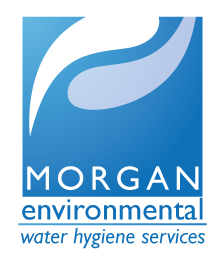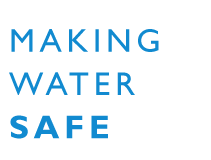A Legionella risk assessment is conducted based on the following legislation and guidelines:
- Health and Safety at Work Act 1974.
- Control Of Substances Hazardous to Health (COSHH) Regulations 2002 and Amendment 2003 and 2004.
- The Approved Code of Practice and Guidance – Legionnaires’ Disease ACoP L8 "The Control of Legionella Bacteria in Water Systems"
- Minimising the Risk of Legionnaires' Disease - Technical Memorandum. TM13 CIBSE 1991
- Safe Operation of Cooling Towers, B.A.C.S. 1989.
- British Standard 8588.
- Water Supply (Water Fittings) Regulations 1999.
- EC Directive relating to the Quality of Water Intended for Human Consumption (80/778/EEC)
- BS 8580:2010 Water Quality. Risk Assessments for Legionella.Code of Practice was released by the British Standards Institute to accompany ACoP L8.
- HTM 04-01. The control of Legionella, hygiene, “safe” hot water, cold water and drinking water systems (Part A and Part B)
- HTM 01-05: Decontamination in primary care dental practices.
- HSG 274 part 1 The control of legionella in evaporative cooling systems.
- HSG 274 part 2 The control of legionella bacteria in hot & cold water systems.
- HSG 274 part 3 The control of legionella bacteria in other risk systems.
Why do you need a legionella risk assessment ?
It is a legal requirement under the Health and Safety at Work Act, The COSHH Regulations, and The Management of Health and Safety at Work Act.
The requirement for a suitable and sufficient legionella risk assessment to identify the risk of Legionellosis from work activities and water sources in the workplace is further defined in The Health & Safety Commission’s, Approved Code of Practice and Guidance, L8 document “The control of legionella bacteria in water systems”.
The Legionella risk assessment should be conducted to enable valid decisions to be made about the level of risk to health, and the measures for prevention or control of the risk. The measures for prevention and control are clearly defined as an integral part of our legionella risk assessment reports. Our reports have been designed specifically to ensure compliance with HSE requirements.
Potential Risk Areas:
- Water systems incorporating a cooling tower
- Water systems incorporating an evaporative condenser
- Hot and cold water distribution systems
- Showers
- Vehicle wash systems
- Lathe and machine tool coolant systems
- Dental equipment
- Water features
- Horticultural misting systems
- Fire suppression systems
- Spa baths
Other plant and equipment containing water which is likely to exceed 20˚C and which can release a spray or aerosol during operation or maintenance is vulnerable to contamination.
Our risk assessor has over 15 years experience in the industry, Water Management Society / City and Guilds trained in carrying out legionella risk assessments, and is able to provide our clients with a detailed risk assessment on aspects of the systems design, installation, condition, operation and usage that present a legionellosis risk, based on the guidance in ACoP L8, HSG 274, BS 8580 and the Water Fittings Regulations.
The report will contain.
- An introduction containing a brief description of the site, its activities and its management structure.
- Survey comments giving an overview of the systems and key points raised by the survey, and assessment of the overall risks associated with each system.
- System identification - A summary list of all systems found and inspected for legionellosis risk.
- Surveys – The inspections surveys, temperature asset register and any other tests undertaken.
- Photographs – Digital photographs are included where they highlight poor conditions or specific points of concern.
- Simple AUTOCAD schematics of the water systems.
- A specific evaluation of the existing written scheme for minimising the risk of legionellosis including recommendations for additional provisions. A list of detailed recommendations will be included for each water system, which will be ordered by risk rating prioritising the highest risks.
- Detailed proposals for the site specific tasks to be conducted with frequencies in order to allow the production of a control scheme.



